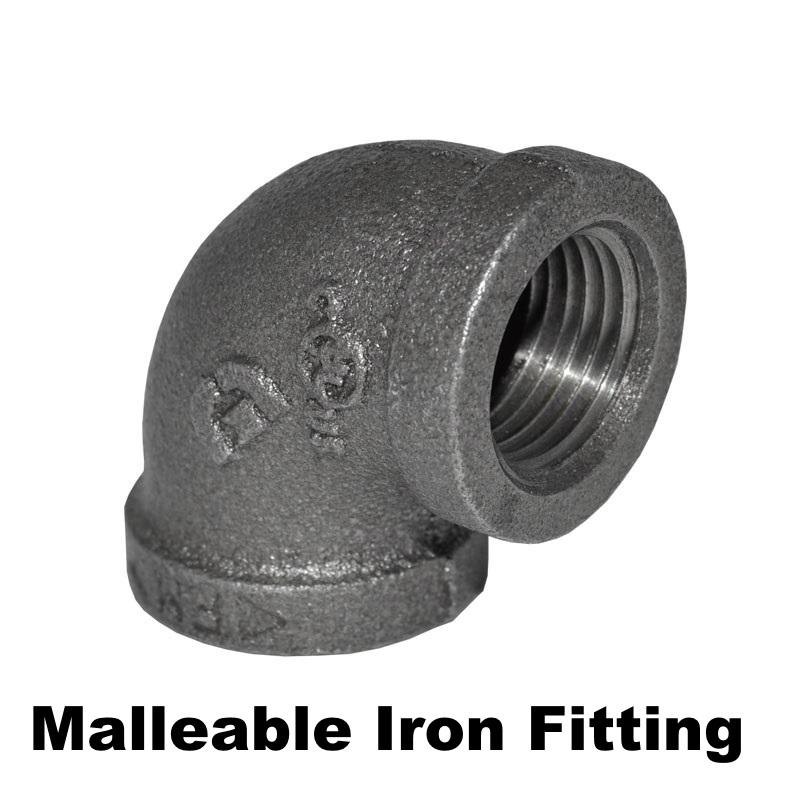
People know us for our plastic products (hint: it's in our name), but we are fans of everything to do with piping. Metal pipe, fittings, valves, and filters are no exception! This blog post is titled "Malleable vs. Ductile Iron" and will lay out a comparison between malleable and ductile iron.
You may be thinking, "If they're both iron, they should behave basically the same, right?" That's a great question, but the answer is no. These are two iron alloys with different chemical compositions, so you cannot always use them interchangeably. First, we will look into the history of these materials. Then we will lay out the physical properties of each material. Finally, we will investigate common applications for each material.
Iron History
Humans have been manipulating iron to build things for centuries, maybe even millennia. However, most improvements to iron are somewhat modern. Until recently, the strongest types iron were "gray" and "white" cast iron. To make cast iron equipment, molten iron was molded in a cast. They had to do this because hammering cast iron breaks it. Gray and white iron were structurally sound, but cracked if bent or expanded.
Malleable iron was the first iteration that could be hammered and bent into shape. This made it much easier to work with and less likely to fail. In 1943, however, ductile iron was developed. The difference between malleable and ductile iron was toted to be strength. This would allow ductile iron to be more easily bent and manipulated without breaking. So which material is actually better? Let's list their physical properties.
Malleable vs. Ductile Iron Properties
To compare these two materials, we will examine how well pipe fittings made of each hold up to pressure and temperature. For fittings, this is there they start expanding enough to leak, not where they physically break. These maximum pressures are for when fittings are at optimal temperatures. We will begin by looking at malleable iron fittings.
 Malleable Iron Properties*
Malleable Iron Properties*
- Max Temperature:
- Class 150: 450F (232C)
- Class 300: 450F (232C)
- Max Pressure:
- Class 150: 300.23PSI (20.7bar)
- Class 300: 362.6PSI (25bar)
Ductile Iron Properties**
- Max Temperature:
- Class 150: 450F (232C)
- Class 300: 450F (232C)
- Max Pressure:
- Class 150: 275PSI (19bar)
- Class 300: 500PSI (34.5bar)
These are just two measurements for temperature and pressure tolerance by two companies. There are no set temperature or pressure tolerances that are always true for the materials, but these measurements were chosen to give a good idea that, when it comes to pressure and temperature, these two materials are fairly similar. Due to the innovations used in the manufacture of ductile iron, it is slightly less expensive and more malleable, which are helpful qualities for larger, more expensive projects.
Uses for Malleable Iron
Malleable iron is often used for small parts due to its excellent tensile strength. This includes electrical fittings, hand tools, pipe fittings, washers, brackets, fence fittings, power line hardware, farm equipment, and more. Companies around the world make fittings and other such equipment out of malleable iron, which is a testament to how well it still works 70+ years after the advent of ductile iron.
Uses for Ductile Iron
Ductile iron is used for much of the same type of items as ductile iron, as it is also very strong and workable (or ductile). The uses for ductile iron include pipe fittings, industrial piping, liquid fittings, strainers, and more. As mentioned before, ductile iron is cheaper to produce. Large ticket items, such as industrial strainers and valves, are regularly constructed out of ductile iron for this reason.
 After doing the research and reading the facts, we have concluded that, while malleable iron is capable of great things, ductile iron is the superior alloy. Malleable iron typically has some internal flaws stemming from irregularly-shaped carbon particles. This makes cracking a possibility. Ductile iron has spherical carbon particles that allow for more bending.
After doing the research and reading the facts, we have concluded that, while malleable iron is capable of great things, ductile iron is the superior alloy. Malleable iron typically has some internal flaws stemming from irregularly-shaped carbon particles. This makes cracking a possibility. Ductile iron has spherical carbon particles that allow for more bending.
Aside from the structural advantages of ductile iron, it is also easier and cheaper to construct. Malleable iron considerably shrinks when solidifying, but ductile iron does not. This means that ductile does not require as many specialized workers or equipment to mold as its predecessor. Unless your application is severe, you probably would not even notice the difference between these products
Ductile iron wins in this comparison, but malleable iron is still a great material used for fittings and other equipment to this day. We even carry a very popular line of black malleable iron fittings for gas lines.
*These measurements are from Crane's Malleable Fitting Page.
**These measurements are from Shurjoint's "Ductile Iron Threaded Fittings" catalogue.
























































